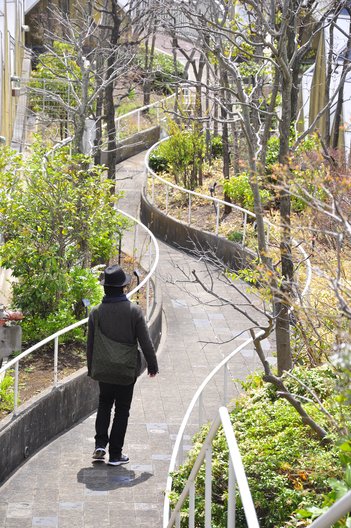
© Toh Shimazaki Architecture
Takero Shimazaki’s exploration focused on Japanese architect Itsuko Hasegawa, whose architecture displays remarkable abstraction yet is intimately connected to its location and users. By investigating the work of Hasegawa, who often goes against the grain of architectural fashion, Shimazaki examined the premise that negotiations with client, public or planners may lead to an architecture that is dull and compromised, and that the role of the architect is often to act more as a facilitator or administrator than as a design leader. Shimazaki documented four of Hasegawa’s public projects and conducted a series of interviews with Hasegawa and her peers, revealing her attitudes and approach to her work. The investigation shows an architect who is prepared to lead, to challenge and, sometimes, to be unpopular, yet who builds lasting connections with the communities in which she works.
Interview with Toh Shimazaki
Why did you want to be part of Venice Takeaway?
I wanted to revisit and reabsorb the works of Itsuko Hasegawa, for whom I worked briefly in the past. Hasegawa’s architecture has undoubtedly contributed greatly to my thinking and working as an architect. For some time I have wanted to reflect on her work in order to objectively understand what I have learned from her. The project was an opportunity to seek new ideas, and it was also motivated by my desire to understand Hasegawa’s work in relation to other ‘humane’ architects I have been researching (eg Alison and Peter Smithson, Lina Bo Bardi and Eric Miralles).
Where did your idea come from?
Given the abstract nature of plans, sections and elevations, communicating architectural ideas is one of the most difficult parts of the design process. Architects are educated to communicate ideas to other architects and frequently adopt a self-referential language. This can alienate the people for whom they are actually designing. Hasegawa addresses this by ‘crafting’ her drawings, writings and artefacts. She decides many details on-site, which empowers the builders and involves them in the process. I wanted to find out how she made this approach work in an age when architects operate within an economically and politically challenging environment.
How are research and exploration important to your practice?
Our practice does not exist in a vacuum, so it is important to have references and inspiration in our work. Exploration helps us connect to the wider scope of contemporary and historical architecture. As an academic at the AA School, my unit has found inspiration in the work of Alvin Boyarsky and others. Toh Shimazaki Architecture (t-sa) has also developed its own independent school of architecture to operate alongside the practice and has invited British and international students to research craft-based architectural approaches. Further explorations have connected us to the community: t-sa introduced ‘forum mini’, a workshop for children that forces us to explore different ways of communicating place-making.